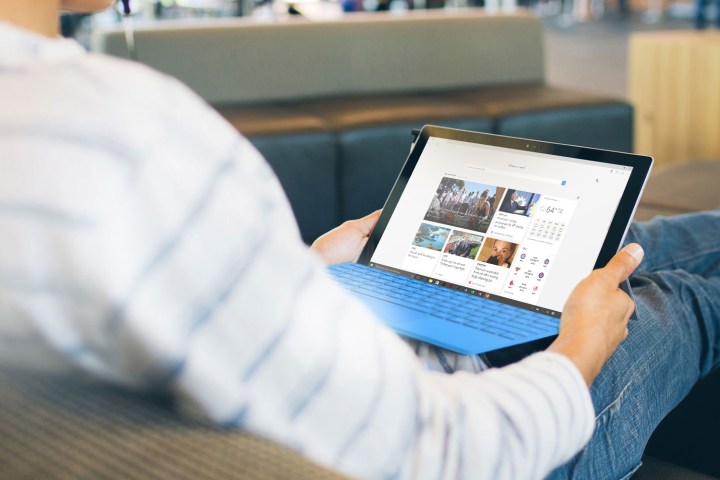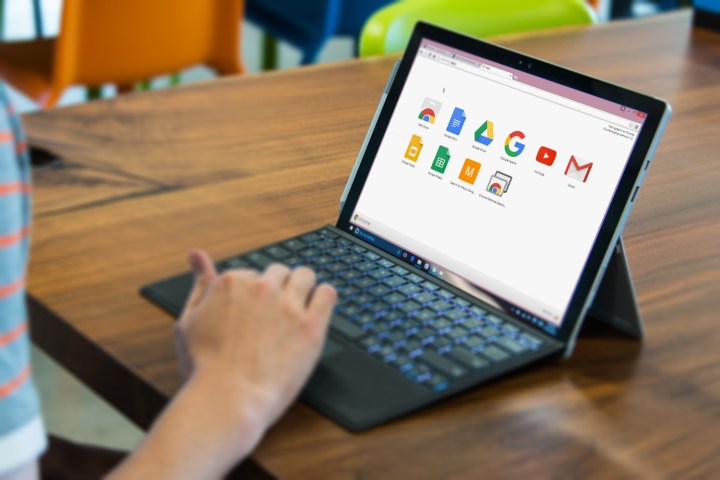
I decided to give Edge a go, and used it exclusively for two weeks. My initial impressions of Edge were surprisingly positive. The browser was better than I imagined: It feels quick, the interface is intuitive, and it does have some neat features, like built-in annotation.
Life on the Edge wasn’t impossible, but it was tough, and I’m glad to be back on Chrome.
Upon loading Edge, I noticed that it has a very clean setup, with as little clutter as possible. It definitely looks appealing with its flat lines and sharp angles. It is obvious that Edge was made with Windows 10’s design in mind. In this sense, compared to Edge, Chrome does look like a 2008 design relic.
I’d say 90 percent of my time with Edge was positive. I could see myself using the browser intermittently, especially on a touch device like a Surface. But that final 10 percent ruins the experience.
Life on the Edge wasn’t impossible, but it was tough, and I’m glad to be back on Chrome. Below are some of the problems I’ve had using Microsoft’s newest browser.
Chrome is more responsive
I’ve always enjoyed Chrome’s responsiveness. When closing a tab, regardless of how much my computer was slowing down, hitting the small close icon worked immediately. When my Surface became overloaded, getting Edge to close its tabs was an ordeal. I continued to hit the big fat “X” to no avail, forcing me to bring up Task Manager.
Chrome is often accused of being a resource heavy hog, but in my experience it’s Edge that requires users on lesser powerful machines to be a bit more restrained.
Edge has some video playback issues
There were some other notable lags with Edge. Namely, source quality streaming on Twitch, when played on my Surface Pro 3, was choppy. But at least Twitch played, because videos on other sites would not work at all.
For example, Edge still does not support WebM video playback. WebM is a relatively new HTML 5 video format that is light and loads quickly. Certain sites have gone away from sharing GIFs, to sharing this kind of HTML 5 video instead. Microsoft has said that WebM playback is in the works, but eight months after Edge’s launch, it’s not available.
It always loads my old tabs, and I can’t stop it
Edge has a new feature that allows tabs from your previous browsing experience to load right back up. I use the word “feature” lightly, because it’s more of an annoyance.
I usually expect a fresh browsing experience when turning on my computer, but to have Edge load previous webpages rarely solved any problems. From my findings, it looks like there’s no way to turn this off. It’s an odd inclusion that needs more options so users can set their preference.
I can’t queue up YouTube videos anymore
I did notice my browsing habits start to change the more I used Edge. For example, with Chrome I would open up multiple YouTube links in separate tabs, knowing that once I got to them, the video would then load.

With Edge, setting aside videos for later viewing didn’t have that same finesse. If I did try to open multiple YouTube tabs, all videos would start playing. Because of this, I could only tab one YouTube video at a time. It’s a small nitpick, but just another in my pile of complaints.
It changed my homepage on me
I decided to make MSN my homepage, and at some point it changed to MSN Japan. All I had to do was go into the settings and change it back, but that alteration was confusing regardless. Other quirks included an infinite squiggly red line — the one used to denote misspellings — continuing far past typos when I write or edit in WordPress.
I miss Chrome’s little features
Another feature I missed on my Chrome sabbatical was being able to hit the tab button to search. For example, in Chrome I could start typing “wi” and “wikipedia” would populate. I could then press the tab button to search Wikipedia.
In Edge I had to load Wikipedia, click on the search box, and then start researching. This simple step removal greatly improved browsing efficiency on Chrome, and made research snappier.
Pop-ups are way worse than on Chrome
After using Edge, I realize that I failed to appreciate Chrome’s security infrastructure. On Edge, pop-ups were far more intrusive, and hindered my browsing experience. Not only that, a corrupted site forced me to reset Edge completely.
It’s something that I had never had to deal with on Chrome, and it’s something that Microsoft really needs to figure out. The internet can be a volatile place, and security is extremely important. My bad experience has made it difficult to trust Edge.
Syncing between devices isn’t clear cut
Being able to login with my Google account and have it sync all my favorites and settings, regardless of which machine I’m on, is a favorite feature of Chrome. To an extent, settings can cross over with Edge via your Microsoft Account, but the feature is extremely opaque. My favorites often showed up across devices, but some had to be re-favorited in order for the icons to appear. Login information did not cross over, requiring me to re-enter it.
Chrome makes it known that your browser is linked to your account, with your name on the top right-hand corner. It really feels like you’re logging into Chrome’s world, and there are specific settings to control a variety of sync options. Edge could learn a lot from how Google’s sync works.
Most of all, I miss Chrome extensions
But by far the most missed feature of Chrome was its extensions. Mozilla Firefox essentially built its brand by allowing people to customize the browser with different add-ons. Chrome quickly adopted this model, and users in-turn made their browsers cater to their needs. Because Edge does not support extensions yet (in the stable build), I couldn’t use my Kim Kardashian blocker. The horror!
Because Edge does not support extensions, I couldn’t use my Kim Kardashian blocker.
Kidding aside, this is a potential security issues. Most password managers don’t work with Edge yet, for example. Neither do many anti-phishing extensions that come bundled with antivirus suites. With Edge, it’s often just you against the internet.
Microsoft has said that extensions will be coming soon, and some Windows Insiders are already testing the feature out. Unfortunately, Microsoft has been slow with Edge feature updates, and it looks like the next major overhaul to Edge will come this August with the Windows 10 Anniversary Update. Even then, it’s not clear how quickly third parties will port to Edge.
I’m going back to Google for browsing
Edge’s browsing experience isn’t all bad. Despite my nitpicks, it works more often than it doesn’t. But a good browsing experience has to feel natural, like an extension of your fingers. That’s how Chrome feels. As for Edge? Well, it has a lot of catching up to do.
The challenge for Microsoft is two-fold. Not only must it set out to make the best browsing experience possible, it must also push against the stigma that it can’t make the same quality experience that Google, Mozilla, or even Opera can.
Edge can be a reasonable choice for some devices, particularly Microsoft’s own Surface line. It runs with a lighter step on my Surface and I don’t hear the fan gasping for air. But there are some pain points that need to be addressed before I could see myself switching over completely.
If Microsoft can continue to enhance responsiveness, performance, and syncing — and add those extensions already! — then can Edge be a sound replacement. For now, you should stick with Chrome.
Editors' Recommendations
- This secret Microsoft Edge feature changed the way I work
- Microsoft Bing and Edge are getting a big DALL-E 3 upgrade
- I found a Chrome extension that makes web browsing bearable again
- This PowerPoint ploy could help hackers empty your bank account
- I tried the trendy new Arc browser — and this one feature blew my mind


